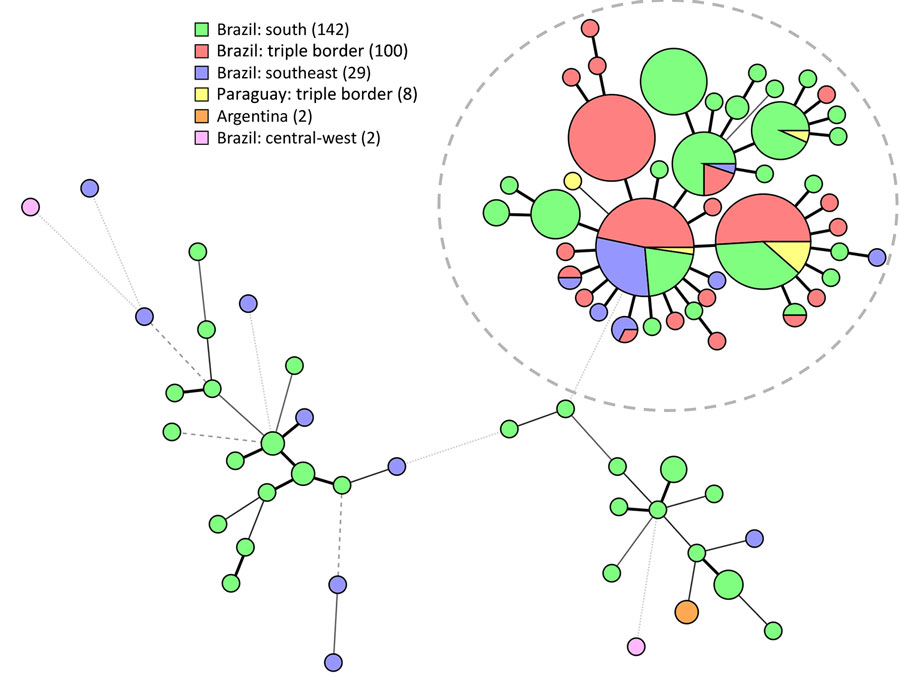Sporothrix brasiliensis Treatment Failure without Initial Elevated Itraconazole MICs in Felids at Border of Brazil
Carolina Melchior do Prado
1, Bram Spruijtenburg
1, Emanuel Razzolini, Luciana Chiyo, Carlos Santi, Caroline Amaral Martins, Gabriela Santacruz, Nancy Segovia, José Pereira Brunelli, Regielly Caroline Raimundo Cognialli, Jacques F. Meis, Vânia Aparecida Vicente, Theun de Groot, Eelco F.J. Meijer
2, and Flávio Queiroz-Telles
2
Author affiliation: Radboudumc–CWZ Center of Expertise for Mycology, Nijmegen, the Netherlands (C.M. do Prado, B. Spruijtenburg, J.F. Meis, T. de Groot, E.F.J. Meijer); Federal University of Paraná, Curitiba, Brazil (C.M. do Prado, E. Razzolini, R.C.R. Cognialli, V.A. Vicente, F. Queiroz-Telles); Canisius-Wilhelmina Hospital (CWZ)/Dicoon, Nijmegen (B. Spruijtenburg, T. de Groot, E.F.J. Meijer); Zoonosis Control Center, Foz do Iguaçu, Brazil (L. Chiyo, C. Santi, C.A. Martins); National University of the East, Minga Guazú, Paraguay (G. Santacruz, N. Segovia); Ministry of Public Health and Social Welfare, Asuncion, Paraguay (J.P. Brunelli); Institute of Translational Research, Cologne Excellence Cluster on Cellular Stress Responses in Aging-Associated Diseases, Excellence Center for Medical Mycology, University of Cologne, Cologne, Germany (J.F. Meis)
Main Article
Figure 2

Figure 2. Minimum-spanning tree of isolates in study of Sporothrix brasiliensis treatment failure without initial elevated itraconazole MICs in felids at border of Brazil. Tree comprises 283 isolates, including 108 isolates based on 9 short tandem repeat markers from this study (red and yellow); green, blue, and pink indicate comparison isolates from previous studies; and numbers in the key represent the number of isolates from each location. Gray dashed circle indicates Rio de Janeiro clade. Regions of Brazil: south, Paraná, Rio Grande do Sul; southeast, Rio de Janeiro, Minas Gerais, São Paulo, Espírito Santo; central-west, Federal District.
Main Article
Page created: June 23, 2025
Page updated: August 26, 2025
Page reviewed: August 26, 2025
The conclusions, findings, and opinions expressed by authors contributing to this journal do not necessarily reflect the official position of the U.S. Department of Health and Human Services, the Public Health Service, the Centers for Disease Control and Prevention, or the authors' affiliated institutions. Use of trade names is for identification only and does not imply endorsement by any of the groups named above.
